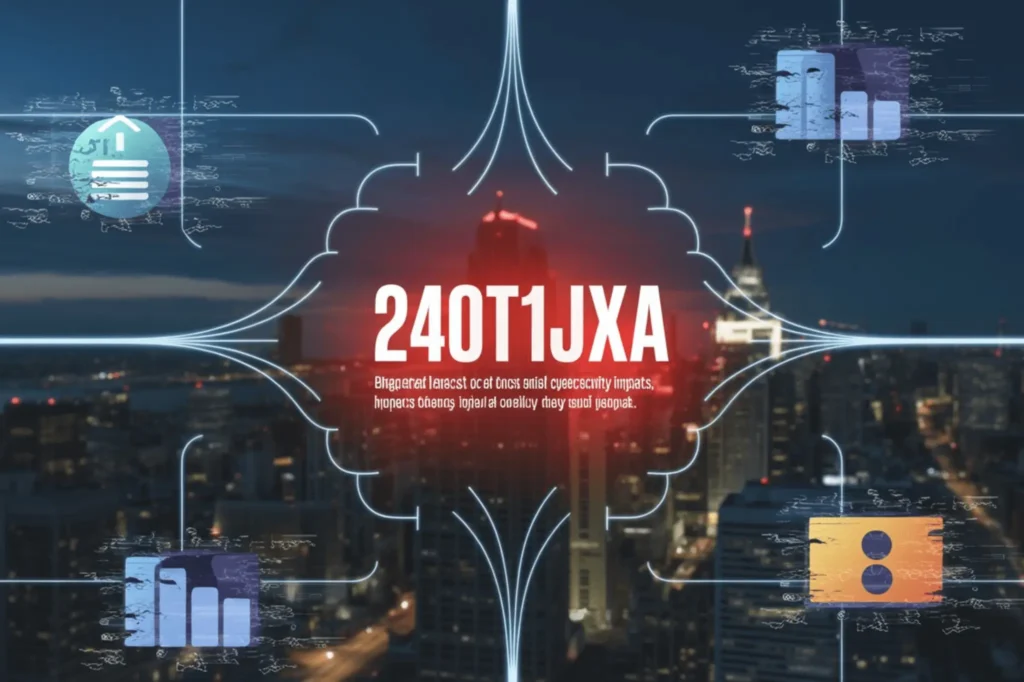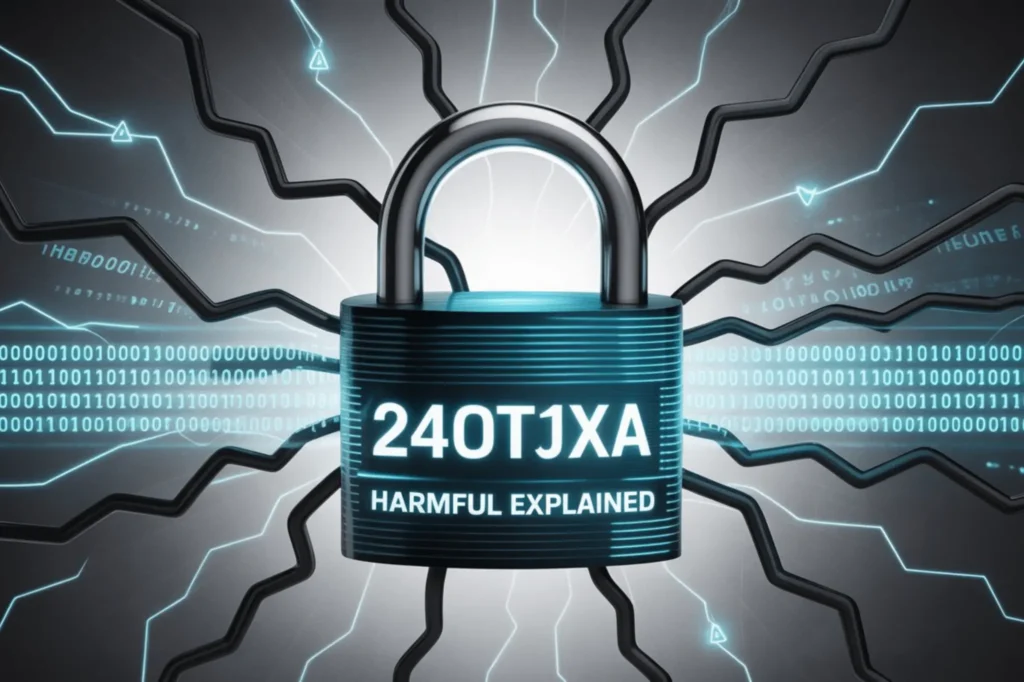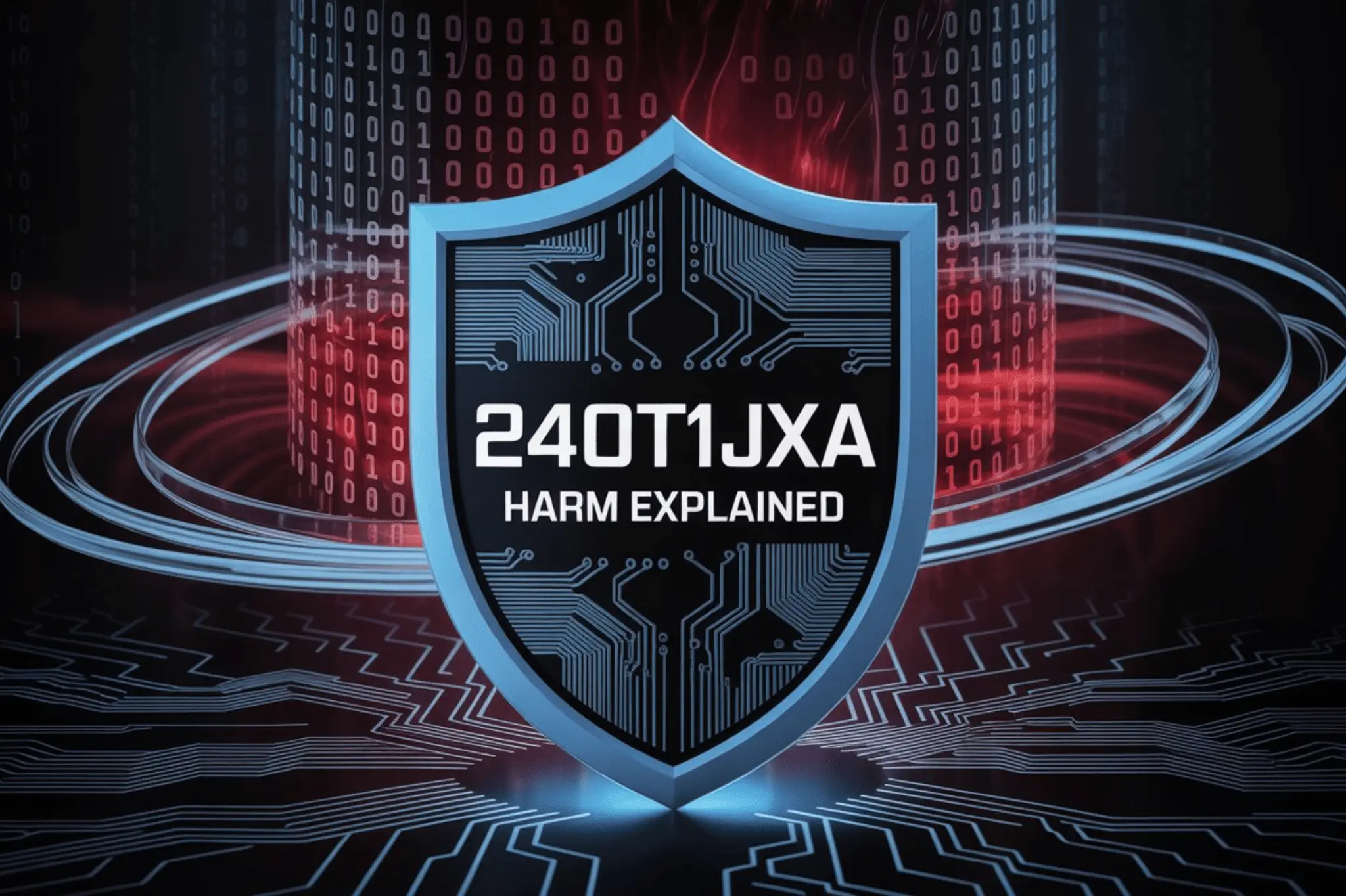Introduction
In our hyper-connected digital society, a seemingly meaningless term like 24ot1jxa may appear inconsequential. But scratch the surface, and it reveals itself as a potent threat hiding behind a string of characters. While it could originate as a benign identifier in codebases, its mutation into a malware entity and phishing tool has cybersecurity experts on high alert. Understanding why 24ot1jxa harmful is no longer optional—it’s a requirement for individuals, businesses, and developers seeking digital security.
What is 24ot1jxa?
24ot1jxa is an alphanumeric code that often serves as a session identifier, access token, or system key. It’s used across multiple platforms to ensure seamless system operations. However, in recent years, cybercriminals have weaponized its structure, creating malware disguised as trusted identifiers. Because of its dual nature—harmless in one situation and hazardous in another—24ot1jxa is particularly dangerous and misleading.
Why 24ot1jxa Harmful in Today’s Digital Era
The digital footprint of 24ot1jxa has been growing. From covert surveillance activities to silent system intrusions, it often bypasses antivirus software undetected. It not only disrupts operational integrity but also contributes to mass data breaches and misinformation campaigns. In the wrong hands, 24ot1jxa becomes more than a code—it becomes a weapon.
The Psychological Toll of 24ot1jxa Exposure
Being targeted or compromised by hidden malware like 24ot1jxa often leads to invisible trauma. Victims report feelings of digital vulnerability, distrust in technology, and anxiety from the loss of control. Mental health consequences can linger long after the infection is removed, reminding us that cybersecurity is not just technical—it’s psychological.
Cybersecurity Threats Caused by 24ot1jxa
- Data Theft: Harvests passwords, login details, and banking credentials for malicious use.
- Spyware Infiltration: Monitors keystrokes, tracks browsing habits, and collects personal content.
- Remote Control Exploits: Grants unauthorized users control of your system.
- Ransomware Behavior: Encrypts files and demands payment for decryption keys.
- System Crashes: Causes software instability, slowdowns, and repeated errors.
- Firewall Evasion: Bypasses security protocols using cloaked behavior.
- Antivirus Resistance: Designed to slip past or deactivate traditional detection software.
How 24ot1jxa Evades Detection
The secret weapon of 24ot1jxa lies in its stealthy architecture. It mimics legitimate system processes, making it nearly invisible to typical monitoring tools. Through polymorphic code, dynamic DNS, and fileless execution, 24ot1jxa adapts its signature to evade static detection. The malware may even disguise itself within operating system files, making manual identification almost impossible without expert intervention.
Misinformation, Phishing, and Data Leaks
Part of what makes 24ot1jxa harmful is its role in propagating misinformation and orchestrating phishing campaigns. Victims often receive emails that appear legitimate, prompting them to click on infected links. Once access is granted, the malware quietly spreads through browser extensions and shared drives, exposing private data to external servers. Over time, this can lead to identity theft, impersonation, or even blackmail.
The Business Risks of Ignoring 24ot1jxa
Small and medium-sized businesses often overlook emerging threats until it’s too late. The risk of 24ot1jxa ranges from intellectual property theft to financial fraud. Once it breaches a system, the attacker can access emails, billing data, and proprietary files. A single breach can lead to customer distrust, legal consequences, and bankruptcy, especially under strict compliance rules like GDPR.

Social Fragmentation and Polarization
Interestingly, 24ot1jxa can fuel online discontent and division. When used to promote false narratives or echo chamber ideologies, it reinforces digital silos. It’s not just attacking data; it’s attacking discourse. By spreading polarizing content or hijacking social media accounts, it can weaken public trust in information systems and democratic processes.
How to Detect 24ot1jxa on Your Device
Detection is possible with proactive monitoring. Symptoms may include:
- Browser settings that change without your input.
- CPU or RAM usage spikes during idle times.
- Unknown files appearing in your Downloads or Program folders.
- Inability to access certain antivirus or security tools.
- Notifications of failed login attempts or location mismatches.
If you notice any of the above, it’s time to scan and isolate your system immediately.
Real-Life Examples of 24ot1jxa Attacks
One case involved a mid-sized finance firm in Canada whose entire customer database was encrypted overnight. The 24ot1jxa malware was disguised as a PDF invoice, which an employee mistakenly opened. The cost? Over $500,000 in damages and an 8-month-long forensic investigation. Another instance was an influencer whose accounts were hijacked using access tokens formatted like 24ot1jxa, leading to reputational and financial loss.
How Tech Companies Can Fight Back
Tech platforms must play a bigger role. This includes:
- Active content moderation,
- AI-enhanced malware detection,
- User training portals, and
- Rapid response teams to handle emerging threats.
Additionally, transparency reports on how companies respond to cyber threats build public trust and resilience.
Digital Literacy: The First Line of Defense
No amount of firewalls or patches can replace human intuition. Understanding phishing tactics, suspicious URL structures, and permissions settings can go a long way in preventing infections. Workshops, simulations, and micro-courses should be mandatory in workplaces and educational institutions alike.
Building Safer Digital Spaces Together
Security isn’t just about individual effort. It’s a shared responsibility between developers, content creators, platform owners, and users. By fostering a culture of caution and accountability, we can collectively neutralize threats like 24ot1jxa.
Tips to Stay Safe from 24ot1jxa
- Keep your OS and antivirus software updated
- Avoid clicking on unverified email links
- Make use of a password manager and strong, one-of-a-kind passwords.
- Enable Multi-Factor Authentication (MFA)
- Back up important files to secure cloud services or encrypted drives
- Disable autorun on USB drives
- Scan devices regularly using reliable malware detection tools
The Future Threat Landscape
Looking ahead, threats like 24ot1jxa will become more personalized, AI-driven, and integrated with IoT vulnerabilities. We may see them spreading through smart TVs, fridges, or home assistants—any device connected to the web becomes fair game. The best defense is staying ahead of these shifts through regular updates and education.
Why Education Trumps Technology in Protection
Even with the most advanced tools, one careless click can still let malware in. This is why education matters more than equipment. Training individuals to recognize warning signs and develop healthy digital habits is the most sustainable path forward.
Common Myths About 24ot1jxa
Many users think malware is easy to spot. But myths like “I use Mac so I’m safe” or “Free antivirus is enough” create false confidence. The reality is that malware like 24ot1jxa is designed to avoid detection and exploit user habits. Busting these myths is essential for digital self-defense.
The Importance of Community Vigilance
Cybersecurity communities and crowdsourced platforms are essential for threat sharing and early warning. By reporting phishing attempts, unusual file types, or suspicious network behaviors, everyday users can become digital watchdogs.
Why 24ot1jxa Harmful for Children & Teens
Young users are especially vulnerable. They’re more likely to click, share, and install without thinking twice. 24ot1jxa can infiltrate games, social apps, and even educational platforms, compromising sensitive data and online safety. Parental monitoring, digital education, and protective software are vital.
Impact on Remote Workers and Freelancers
The flexibility of remote work comes at a cost—lack of enterprise-grade security. Many freelancers work on personal devices without endpoint protection. A single infected file from a client can damage not only the freelancer’s reputation but also client systems, especially when sensitive data is involved.

Preventative Cyber Hygiene Practices
Daily habits can make a huge difference. Regularly log out of accounts, avoid using the same password across platforms, verify app permissions, and educate those around you. Cybersecurity begins with self-awareness and consistent behavior.
FAQs
What is 24ot1jxa and why is it harmful?
It’s a malicious identifier that, when weaponized, can infect systems, steal data, and damage infrastructure.
Can antivirus tools detect it?
Some can, especially advanced or updated ones, but many forms are highly evasive.
How do I remove 24ot1jxa?
Use malware removal tools, disconnect from networks, and restore from a secure backup.
Is it only a business threat?
No, individuals are just as vulnerable, especially those using unprotected devices.
Is 24ot1jxa always malware?
Not always—context matters. But caution is advised when encountering it unexpectedly.
What’s the best long-term defense?
A mix of updated tools, digital literacy, and proactive monitoring.
Conclusion
The evidence is overwhelming—Why 24ot1jxa Harmful, both technically and socially. Its ability to operate silently and inflict maximum damage means ignoring it is not an option. But with vigilance, knowledge, and proper tools, you can defend your digital life against it.
Don’t wait for the threat to knock on your digital door. Secure your systems, educate your circle, and lead the fight against invisible threats.

